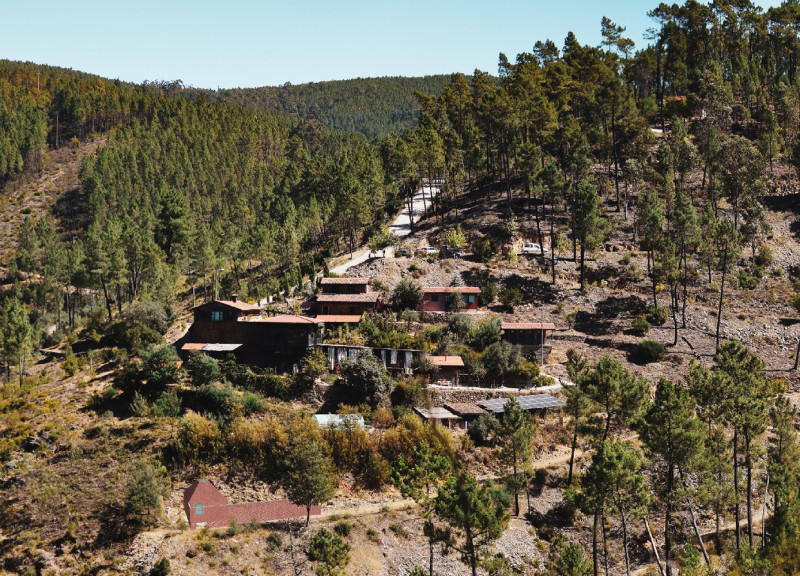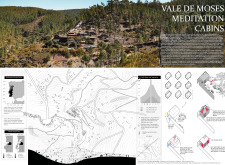5 key facts about this project
The meditation cabin project in Vale de Moses, Portugal, blends sustainable design with the need for tranquility. Set in a green landscape, the cabins serve as spaces for meditation and personal reflection. The design takes cues from traditional rural Portuguese architecture, focusing on creating a connection to the natural surroundings while ensuring comfort for users.
Sustainability and User Experience
The project has three main goals: to build cabins that are sustainable, to provide a grounding experience for visitors, and to create an inviting architectural presence. Sustainability is a key focus, guiding the design choices and promoting an environmentally friendly approach throughout the project.
Architectural Elements
The cabins feature elements typical of local architectural styles, such as whitewashed walls, small windows, and thick, high thermal inertia walls. Courtyards provide a smooth transition between inside and outside spaces, enhancing the overall experience. The rooftops are pyramid-shaped with skylights that allow natural light to filter in, influenced by the work of architect Souto de Moura. These design choices contribute to a calm and comforting environment.
Landscaping and Environmental Considerations
Gardens around the cabins offer varied textures and temperatures, encouraging both private moments and social interaction. The project also considers fire safety, suggesting the use of local eucalyptus trees for structural elements while recommending that they be replaced with fire-resistant native species, such as oak and chestnut, if needed. This approach shows a thoughtful integration of environmental awareness into the design.
Thermal Performance
The design incorporates thermal mass, which helps keep indoor temperatures stable. This aspect is important for providing a comfortable atmosphere that supports meditation. By focusing on thermal performance, the project addresses user needs and the local climate, ensuring that the cabins are effective retreats from external conditions.
The cabins reflect a blend of traditional elements and modern needs. Natural materials and simple forms come together to create an environment where people can find peace and focus on personal reflection.






















































